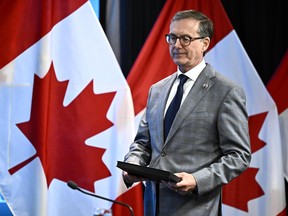The Bank of Canada Raises Concerns About the Government’s Ability to Reduce Temporary Residents
The Canadian government’s pledge to slow down immigration has been met with skepticism by the Bank of Canada, which has raised its population growth forecasts and expressed doubts about the government’s ability to meet its targets.
Mounting Uncertainty Over Immigration Targets
There is mounting uncertainty about when and by how much Justin Trudeau’s government will be able to reduce the number of temporary residents in Canada. This uncertainty has significant implications for fiscal and monetary policymakers, who are tasked with setting interest rates without clear information on the federal government’s plans.
Bank of Canada Raises Population Growth Forecasts
The Bank of Canada raised its population growth forecasts last Wednesday, saying that it will probably take longer for the government to limit non-permanent resident inflows. The bank predicts that the number of working-age people in Canada will rise by 3.3 per cent this year, up from about 3 per cent previously.
Pace of Population Growth Among the Fastest in the World
The pace of population growth is among the fastest in the world and has boosted output, likely keeping the country from falling into an outright recession.
Bank Officials Cite Need for More Time to Implement Policies
Bank officials say it will take longer for planned policies to bring the proportion of non-permanent residents to the federal government’s 5 per cent target. The bank puts the share at 6.8 per cent of Canada’s population and rising in the near term.
Implications for Monetary Policymakers
The timing of the reduction has major implications for the country’s monetary policymakers, who are tasked with setting interest rates without any firm details on the federal government’s plans. Clarity on changes to permit programs isn’t expected until later this year, the bank said.
Bank of Canada Governor Tiff Macklem Weighs in
"We do devote quite a bit of attention in the monetary policy report to try to explain what we think will happen with population growth because that really underpins our forecast," Bank of Canada Governor Tiff Macklem told the Financial Post in an interview.
Upward Revision of Nearly 850,000 People
The central bank’s most recent forecast shows that the number of temporary residents in Canada is expected to rise by nearly 850,000 people, roughly the total population of Quebec City’s metropolitan area. This is an upward revision of nearly 850,000 people from just three months ago.
Impact on Real Gross Domestic Product Growth
The immediate result would be downward pressure on real gross domestic product growth and price pressures, said Randall Bartlett, senior director of Canadian economics at Desjardins. This would also weigh on nominal GDP, the broadest measure of the tax base.
Federal Debt-to-GDP Ratio Could Increase
"The resulting lower revenues should lead to larger deficits and higher debt," Bartlett said in a report on Thursday. The federal debt-to-GDP ratio could end the next five years at a higher level than in Finance Minister Chrystia Freeland’s downside scenario in her 2024 budget.
Fiscal Guardrails Under Threat
Bartlett added that this also has the potential to threaten Freeland’s commitment to her fiscal guardrails, which include pledges to hold the budgetary deficit around $40 billion before reducing the shortfall to about 1 per cent of the country’s economy in 2026.
Additional Spending Could Put Fiscal Anchors at Risk
"With additional spending not included in Budget 2024, such as the greater expenditures on defense announced recently, and the federal government’s fiscal anchors are very much at risk," Bartlett said.
